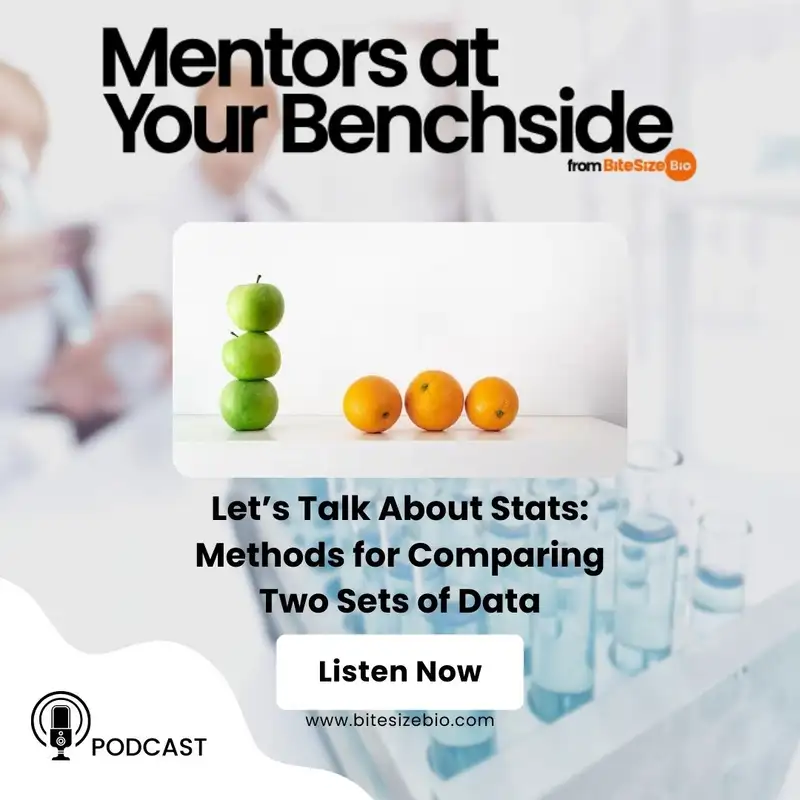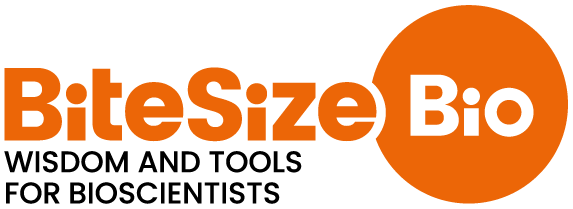
Dr. Adam Pawson
Senior Managing Editor, Bitesize Bio
Appears in 18 Episodes
Isoelectric Focusing: A Simple Way to Enhance Your Protein Separation
#112 — Isoelectric focusing (IEF) is a powerful technique distinct from the more familiar SDS-PAGE, [1,2] tailored for separating proteins or peptides based on their i...

Let’s Talk About Stats: Methods for Comparing Two Sets of Data
#110 — Comparing two sets of data is a fundamental process in statistical analysis, crucial for drawing meaningful conclusions across various fields. Whether it's for ...

Tissue Processing For Histology: What Exactly Happens?
#106 — Transforming a tissue sample into a slide ready for microscopic exploration involves a series of critical steps. Among these, tissue processing is a fundamental...

How to Write an Effective Research Interest Statement
#97 — A research interest statement is essential to successfully apply for an academic job. In this episode, we delve into how to craft an outstanding one. [1]We cover...

Overhang PCR: Add Missing DNA Sequences Using Primers
#95 — Have you ever accidentally forgotten to add the Kozak consensus sequence to the start of a coding gene? Or forgotten to include the stop codon? Did you clone som...

How to Become a Bioinformatician
#93 — Bioinformatics is an interdisciplinary field that combines mathematics, computer science, physics, and biology to help answer key questions in modern biological ...

8 Cell Lysis Methods to Break Cell Walls
#92 — We all need to lyse cells to extract the goodness—our samples—from them.However, there are many cell lysis methods. Some are harsh, while some are gentle. Some a...

Choosing The Right Blood Collection Tubes
#87 — Selecting the right blood collection tubes for your experiment is crucial. But do you know what tubes to use for which type of blood sample?In this episode, we c...

A Step-by-Step Guide to Designing qPCR Primers
#86 — qPCR primer design is a bit of science, a bit of magic, and a little bit of luck. In this episode, we cover the science of qPCR primer design, a cornerstone in c...

A Beginner’s Guide to Hematoxylin and Eosin Staining
#80 — Dive into the fascinating world of histology as we explore the basics of Hematoxylin and Eosin (H&E) staining, a cornerstone technique in tissue study. [1]Whethe...

5 Ingredients for the Perfect Protein Purification Buffer
#79 — Are you struggling to keep your proteins "happy" and active for your experiments? In this episode of Mentors At Your Benchside, we dive into the five critical el...

8 Steps to More Successful Experiments
#48 — One of the critical skills required for any scientist is the ability to consistently design and carry out successful experiments. It’s also vital that any experi...

Does Your h-index Measure Up?
#37 — How do you measure how good you are as a scientist? How would you compare the impact of two scientists in a field? What if you had to decide which one would get ...

Keep Calm and Spin On: The Whats and Whys of Centrifugation
#30 — We have all heard about centrifugation, or more specifically, the horror stories associated with centrifugation going wrong.But don't let centrifugation scare yo...

DNA Ligation: How it Works & 6 Top Tips
#27 — Optimal conditions for DNA ligation reactions are a delicate balance between DNA molecules interacting and the enzymatic ligation reaction.In this episode, you'l...

DNA Precipitation: Ethanol vs. Isopropanol
#12 — As a follow-up to our episode about ethanol precipitation of DNA and RNA [1], this episode explains the differences between DNA precipitation in ethanol and isop...

Ethanol Precipitation of DNA and RNA: How it Works
#6 — Ethanol precipitation is a commonly used technique for concentrating and de-salting nucleic acid preparations in an aqueous solution.In this episode, we'll bring ...

Is it Worth Doing a PhD After a Master’s?
#1 — Is it worth doing a PhD? This is a question that probably plagues every research student at some point in their career.In this episode, we explore 5 important que...


